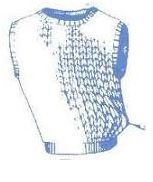Lilou Mace interviews Dr. William Shwetzer, NMD, OMD Holistic Doctor Naturopath
[youtube=https://youtu.be/AXjHBnkZfhc]
Dr. Shwetzer has worked in Thailand as a physician for over 6 years. He uses primarily integrative medical approach to helping people overcome their problems. He feels the physician needs to listen to the concerns of the patient and develop a workable, sustainable treatment plan for their health. Dr. William relies upon diet as the foundation to good health and has degrees in Western and Chinese Medicine, with specialties in Functional, Nutritional and Manipulative Medicine. Dr. William is returning to Tao Garden Clinic after being a doctor for a Chiang Rai University Hospital in-charge of hyperbaric chamber, detoxification and integrative medicine departments for several years.- http://tao-garden.com/clinic-spa-team/
Neuromyofascial model of human body
In manual therapies an immediate “melting” response of the tissues is often felt under the hands of the practitioner.
How can we explain this “tissue release”?
 Many bodywork modalities focus their treatment on the fascial tissues. Fascia comprise a matrix of soft tissue connective tissues surrounding and protecting all the body structures (muscles, bones, organs, nervous system).
Many bodywork modalities focus their treatment on the fascial tissues. Fascia comprise a matrix of soft tissue connective tissues surrounding and protecting all the body structures (muscles, bones, organs, nervous system).
A pure biomechanical model cannot explain the plasticity of the fascial network because the forces applied during manual manipulations are not strong enough to produce any deformation of the tissues.
So what are we doing in our manual manipulations?
Recent findings (1) show that fascia is rich of interstitial receptors that work as mechanoreceptors, which means that they respond to the mechanical stimuli of tension, compression and shear stress. This large network of mechanoreceptors is connected to the autonomic nervous system.
First, sensory input from these receptors can trigger a change of the local blood supply. Second, their stimulation can influence the extrusion of plasma from blood to the extracellular matrix. Such a change in the local fluid dynamics means a change of viscosity of the matrix, which means that the fascial tissues become more fluid. Third, the interstitial mechanoreceptors can trigger an increase in the vagal tone which results in an overall neuromuscular relaxation.
So our fascial network is not simply a viscoelastic material but it is a more complex neuromyofascial system that can change its shape. Therefore slow deep pressure strokes in manual therapies are able to activate a fascial tissue response through autonomic nervous connections. We can say that the fascial web is a self-regulating system.
Fascia are alive! Continue reading . . .
SF Source Lilou Mace March 2015
